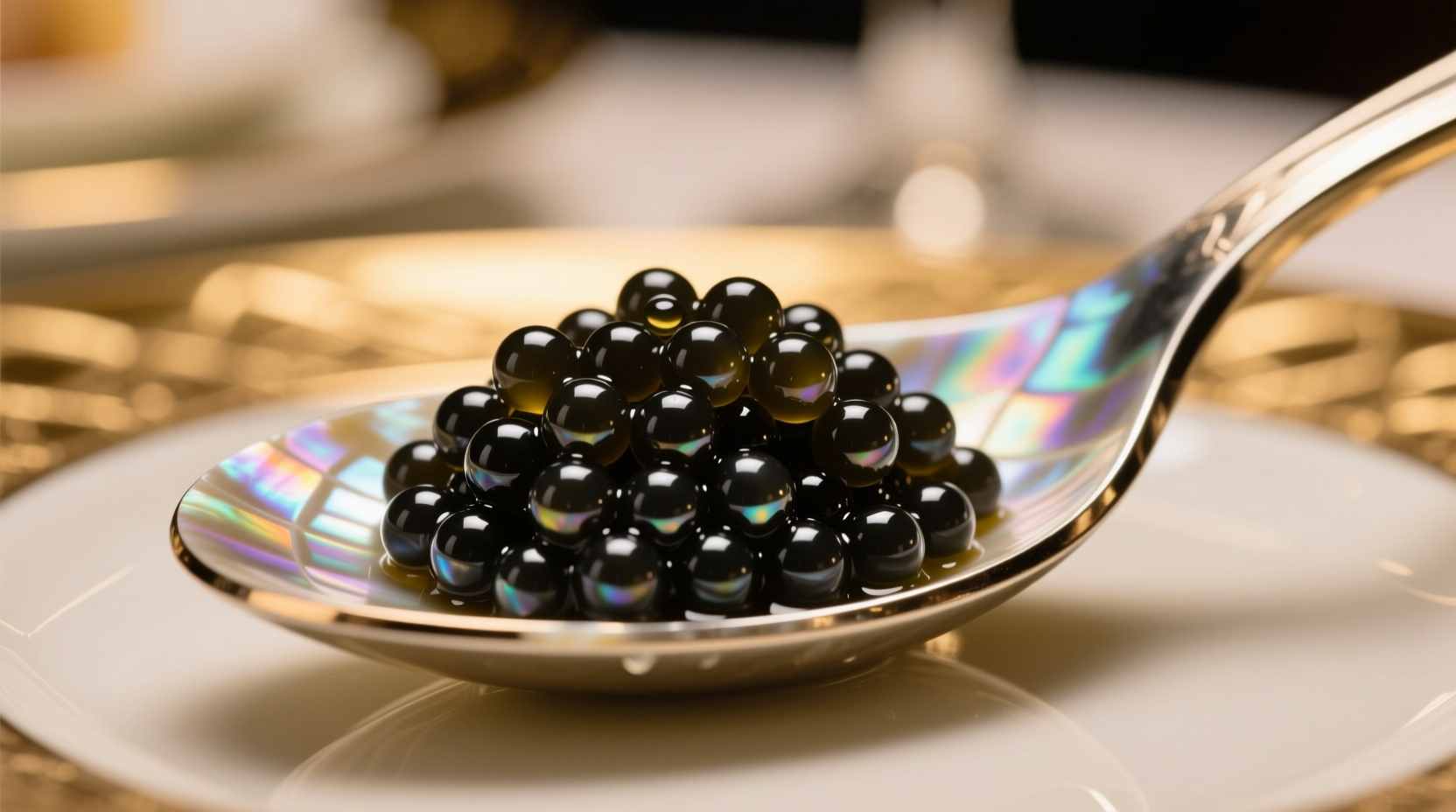Your Complete Guide to Understanding Caviar's Unique Taste Experience
Discover exactly what to expect when tasting caviar for the first time. This comprehensive guide breaks down the complex sensory experience of premium caviar, helping you appreciate its nuanced flavors and identify quality indicators. Whether you're considering your first caviar purchase or simply curious about this luxury food, you'll gain practical knowledge to enhance your tasting experience.
The Immediate Sensory Experience
When you open a container of fresh caviar, the first impression should be clean and ocean-fresh—not aggressively fishy. Premium caviar emits a subtle sea breeze aroma that promises the taste experience to come. The visual appearance matters too: eggs should glisten with moisture but not appear dry or cracked.
As you place a small spoonful on your tongue, quality caviar delivers a satisfying yet delicate "pop" as the eggs burst. This isn't a loud explosion but a gentle release of flavor. The texture should feel creamy rather than slimy or mushy. Lower quality caviar often sticks to the spoon or feels overly liquid.

Breaking Down Caviar's Flavor Components
Caviar's taste experience unfolds in distinct stages that reveal its quality:
- Initial impression: A clean salinity that recalls ocean water—pleasant but not overwhelming
- Mid-palate development: Buttery richness emerges, often with subtle nutty or creamy notes
- Finish: A clean, refreshing finish with lingering umami that invites another taste
The best caviar avoids any metallic aftertaste, which indicates oxidation or poor processing. Instead, premium varieties offer a complex flavor journey that evolves as the eggs break down in your mouth.
How Different Caviar Types Taste Compared
Not all caviar tastes the same. The species of sturgeon, harvesting region, and processing methods create distinct flavor profiles. Understanding these differences helps you select caviar that matches your taste preferences.
| Caviar Type | Egg Characteristics | Flavor Profile | Best For |
|---|---|---|---|
| Beluga | Largest eggs (3.5mm), soft texture, gray to black | Creamy, buttery, subtle nuttiness, delicate brininess | First-time tasters, luxurious experience |
| Osetra | Medium eggs (2.5mm), firm texture, golden to brown | Complex nutty flavor, pronounced brininess, fruity notes | Those who enjoy distinctive flavors |
| Sevruga | Smallest eggs (2.2mm), firm texture, gray to black | Strongest brininess, clean ocean flavor, bold finish | Experienced caviar enthusiasts |
| American Hackleback | Small eggs, firm texture, dark gray | Clean brininess, mild buttery notes, affordable alternative | Everyday enjoyment, budget-conscious buyers |
Factors That Transform Caviar's Taste Experience
Several elements significantly impact how caviar tastes, regardless of type:
Freshness Timeline
Caviar reaches peak flavor 2-3 weeks after harvest. During this optimal window:
- Weeks 1-2: Eggs firm up, flavors begin to develop complexity
- Weeks 2-3: Perfect balance of texture and flavor maturity
- Weeks 3-4: Gradual decline in texture quality, flavor becomes less vibrant
- Beyond 4 weeks: Noticeable degradation in quality, potential off-flavors
Proper refrigeration at 28-32°F (-2 to 0°C) extends this timeline, while temperature fluctuations accelerate deterioration. The USDA recommends consuming caviar within 4 weeks of opening, though premium varieties maintain quality for 2-3 weeks when properly stored.
Serving Temperature Matters
Caviar served too cold numbs the palate, masking its delicate flavors. The ideal serving temperature is 28-32°F (-2 to 0°C)—cold enough to preserve freshness but warm enough to allow flavors to express themselves. Never serve caviar straight from the freezer, as this destroys the subtle flavor balance.
How to Taste Caviar Like a Connoisseur
Follow this professional tasting sequence to fully appreciate caviar's complexity:
- Chill your palate: Take a small sip of chilled vodka or dry sparkling wine to cleanse your taste buds
- Small portions: Place just a half-teaspoon on your tongue—never use metal spoons which alter the flavor
- Let it rest: Allow the caviar to sit on your tongue for 5-10 seconds before gently pressing against the roof of your mouth
- Notice the progression: Identify the initial salinity, mid-palate richness, and finish characteristics
- Clear your palate: Follow with a small piece of blini or unsalted toast to reset for the next taste
Avoid common mistakes that compromise the experience: using metal utensils (which react with the caviar), adding lemon (which overwhelms delicate flavors), or mixing with strong accompaniments that mask the caviar's natural taste.
Identifying Quality vs. Lower Grade Caviar
When evaluating caviar quality, watch for these sensory indicators:
- Texture red flags: Mushy consistency, eggs that don't pop, excessive liquid separation
- Flavor warnings: Strong fishiness, metallic aftertaste, overwhelming saltiness
- Visual clues: Dull color, dry-looking eggs, or inconsistent egg size within the container
High-quality caviar should never taste like low-grade fish roe products. The difference lies in the careful processing, proper salting levels (typically 3-5%), and immediate refrigeration after harvest. According to the International Sturgeon Foundation, premium caviar contains no additives beyond salt, while lower quality products often include preservatives that alter the natural flavor profile.
Perfect Pairings That Enhance Caviar's Natural Flavor
Certain accompaniments highlight caviar's best qualities without overwhelming it:
- Traditional: Plain blinis with unsalted butter (never sour cream which masks flavor)
- Modern approach: Cucumber slices or endive leaves for a clean, refreshing base
- Drink pairings: Chilled vodka, dry sparkling wine, or premium sake
Avoid common pairing mistakes: lemon juice (overpowers delicate flavors), hard-boiled eggs (creates competing textures), or strongly flavored breads that compete with the caviar's subtlety.











 浙公网安备
33010002000092号
浙公网安备
33010002000092号 浙B2-20120091-4
浙B2-20120091-4